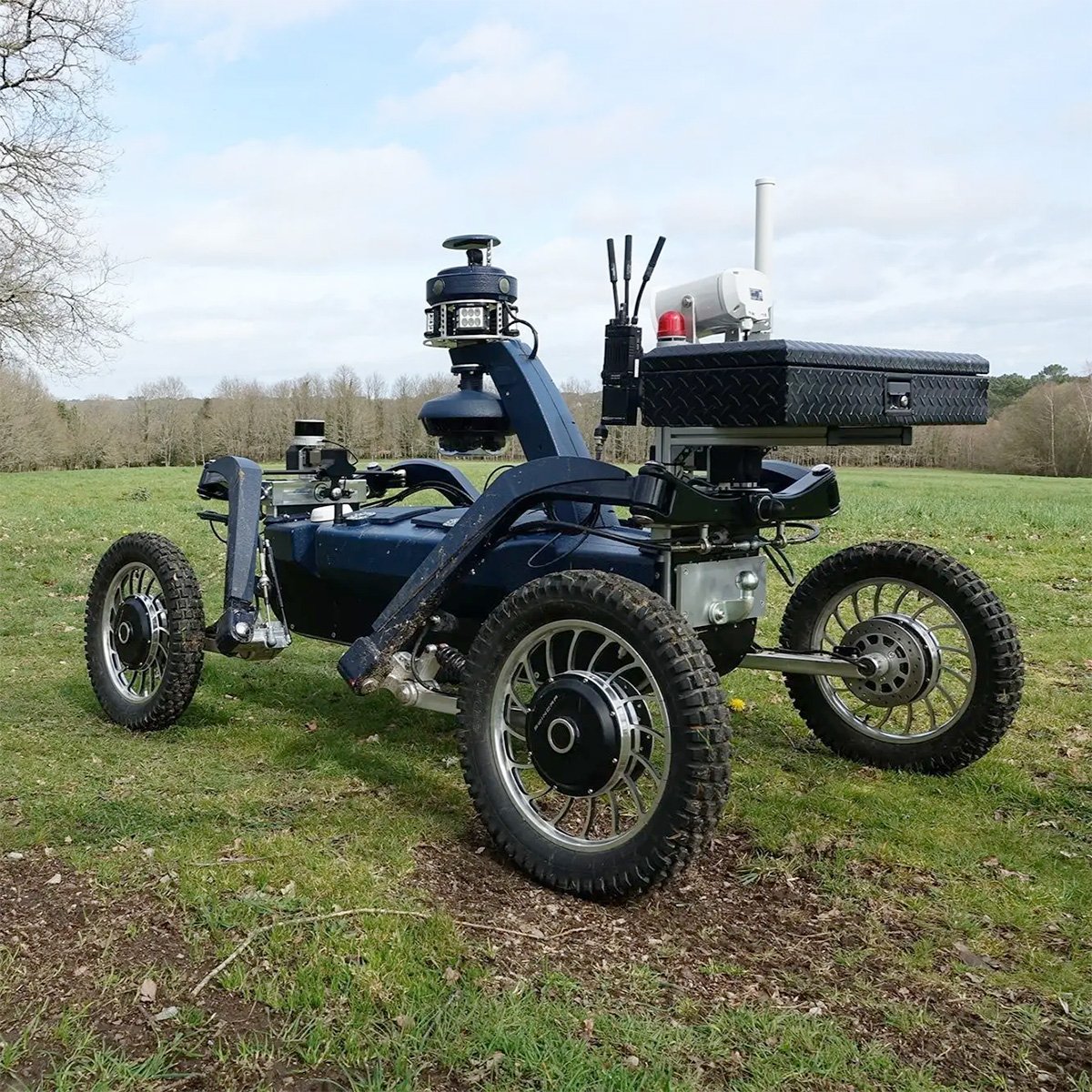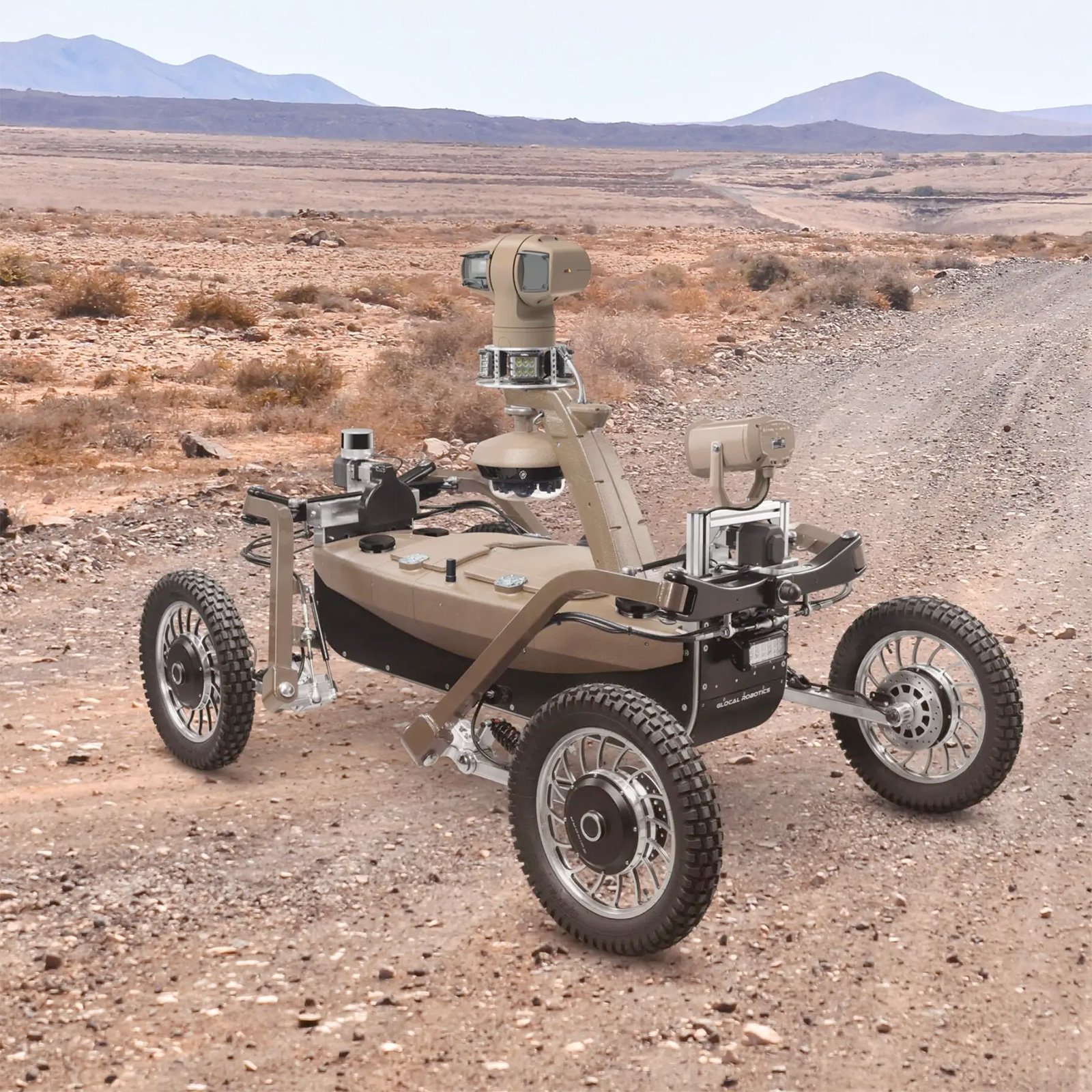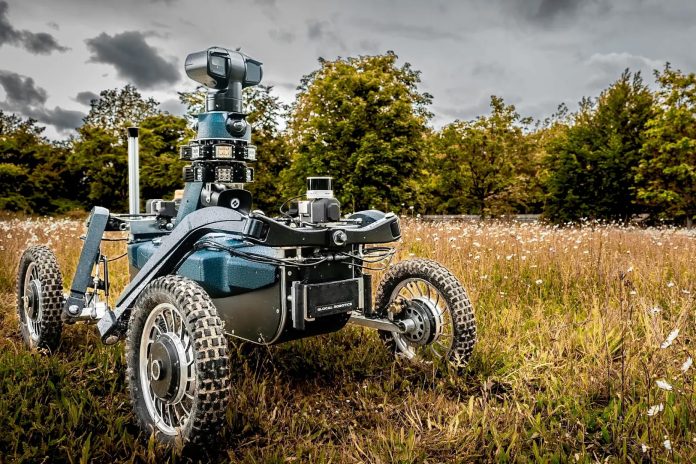In the world of security robotics, the newly released Thalamus security robot stands out with its powerful blend of advanced AI, sophisticated sensors, and robust design, all crafted to enhance the efficiency and safety of surveillance operations. Manufactured in France across Valence and Angoulême, the Thalamus is engineered to meet the rigorous demands of sensitive site monitoring, providing a high-tech solution for modern security challenges.
Key objectives of the Thalamus security robot
The Thalamus is designed with four primary objectives in mind:
- Enhancing security efficiency: Utilizing cutting-edge sensors and artificial intelligence, Thalamus performs continuous monitoring and patrolling, elevating the standard of security protocols in critical areas.
- Reducing operational costs: The robot integrates with existing security frameworks, enabling more efficient resource allocation and reducing the need for manual surveillance, ultimately lowering operational expenditures.
- Accelerating incident response: Thalamus’s advanced detection capabilities allow it to rapidly identify and notify personnel of potential threats, significantly shortening response times and facilitating swift, accurate interventions.
- Minimizing risks to security staff: Designed to operate autonomously across diverse environments, Thalamus reduces the necessity for human presence in potentially hazardous zones, thereby enhancing personnel safety.
Technical specifications and robust design
Weighing in at 250 kilograms and stretching to 2.3 meters in length, the Thalamus is more than just a high-tech robot; it serves as a physical deterrent through its impressive size and formidable appearance. Its top speed of 30 km/h adds to its capability to patrol large areas swiftly, ensuring comprehensive coverage.
The Thalamus also incorporates two artificial intelligence modules and a unique motricity system. This chassis configuration allows it to traverse challenging terrains with ease, thanks to a pendular chassis concept coupled with four flexible, independent structures supporting its drive wheels. This flexibility ensures smooth operation across diverse environments, further solidifying its role as an adaptable solution for a wide array of security applications.

Superior vision and detection technology
To meet the demands of 24/7 surveillance, Thalamus is equipped with an extensive vision system comprising five infrared cameras, including a remotely controlled pan-tilt-zoom (PTZ) camera that provides a comprehensive 360-degree view. Each camera records high-definition footage, which is then analyzed in real-time by a powerful onboard AI algorithm. This system enables Thalamus to distinguish between people, vehicles, animals, and objects, ensuring that unauthorized presences are immediately flagged.
In the event of a security breach, Thalamus can activate an alarm that is either silent or audible and visible, depending on the situation. Additionally, pre-recorded messages can be broadcast to discourage unauthorized intrusions. “Our team has focused on delivering a platform that combines advanced AI with versatile deployment capabilities,” a Global Robotics representative explains. “The goal is to improve security coverage while minimizing the risks and costs associated with human intervention.”
Enhanced low-light vision
The 2024 model introduces improved night vision through an upgraded lighting system. Engineers replaced previous lighting with two rows of powerful spotlights, alternating between infrared and visible light. This enables Thalamus to monitor areas effectively in both day and night conditions, ensuring security personnel can confirm any detected presence in real time. These spotlights and enhanced low-light sensors make the Thalamus particularly adept at night surveillance, a critical requirement for facilities with 24-hour security needs.
GPS-independent navigation
The Thalamus can navigate using GPS for precise tracking; however, it also has capabilities to operate independently of GPS, ensuring uninterrupted performance even in areas with limited satellite signal access. This flexibility allows the robot to function seamlessly across various security applications, from indoor industrial sites to vast outdoor complexes where GPS signals may be inconsistent.
The tropical model: Built for hostile environments
The Thalamus TROPICAL variant addresses the challenges posed by extreme climates. With reinforcements against heat, humidity, and dust, this model is built for environments that would typically hinder electronic systems. The robot’s shock-resistant camera is capable of withstanding winds up to 245 km/h, ensuring stability and functionality under adverse conditions. Its 250 kg weight further supports stability, allowing it to perform reliably even during intense weather events.

This resilience makes the Thalamus TROPICAL particularly suitable for high-risk and remote sites, such as oil fields, coastal facilities, and other challenging locales. “We designed the Thalamus TROPICAL to continue operating where other systems might fail,” a company spokesperson states, highlighting the versatility and durability of this model in harsh settings.
Future potential for enhanced sensing capabilities
While the current Thalamus model focuses on visual detection, the design anticipates future enhancements. Potential additions include sensors for detecting hazardous chemicals, smoke, fire, and even sounds and vibrations, which could expand its application to include industrial safety monitoring and environmental hazard detection. As Global Robotics notes, “The Thalamus platform is built to evolve. By incorporating additional sensing technologies, we can address a broader range of security needs that our clients have voiced.”
A thoughtful naming and conceptual basis
The robot’s name, Thalamus, is inspired by the brain’s thalamus, which serves as a relay station for motor functions and sensory input. Similarly, the Thalamus robot processes and controls sensory information, acting as a reliable intermediary between the security environment and human oversight. The sensory inputs that the robot interprets—sight, in this case—reflect its purpose as a guardian for high-priority sites, carefully screening and filtering activity in protected areas.
Looking ahead
With advancements in autonomous motricity, AI-driven analytics, and durable design, the Thalamus represents an effective tool for enhancing security in environments that require robust and consistent monitoring. While pricing information is not disclosed, Thalamus stands as a valuable option for organizations seeking a reliable solution for comprehensive security coverage.
Source: Glocal Robotics



